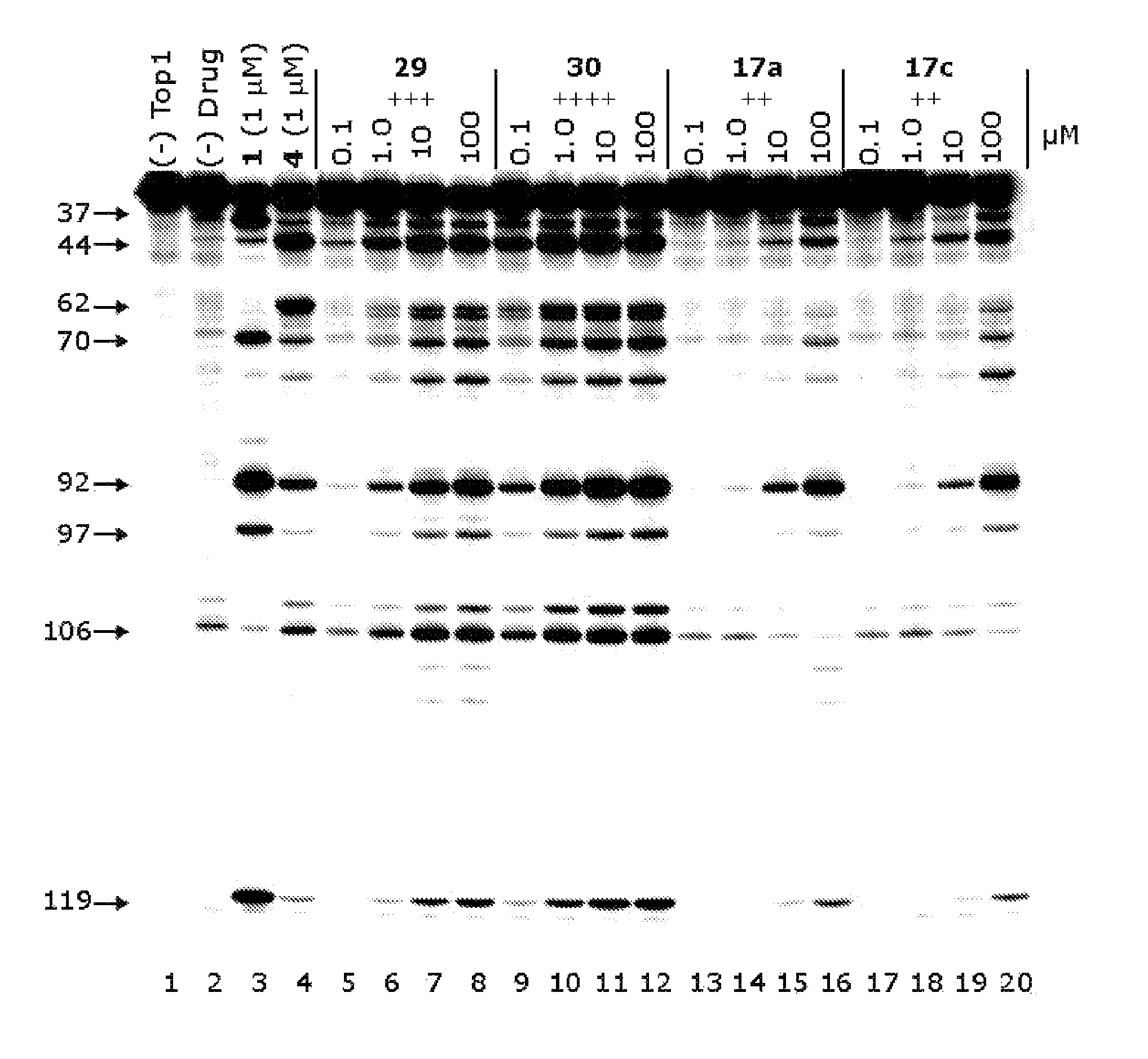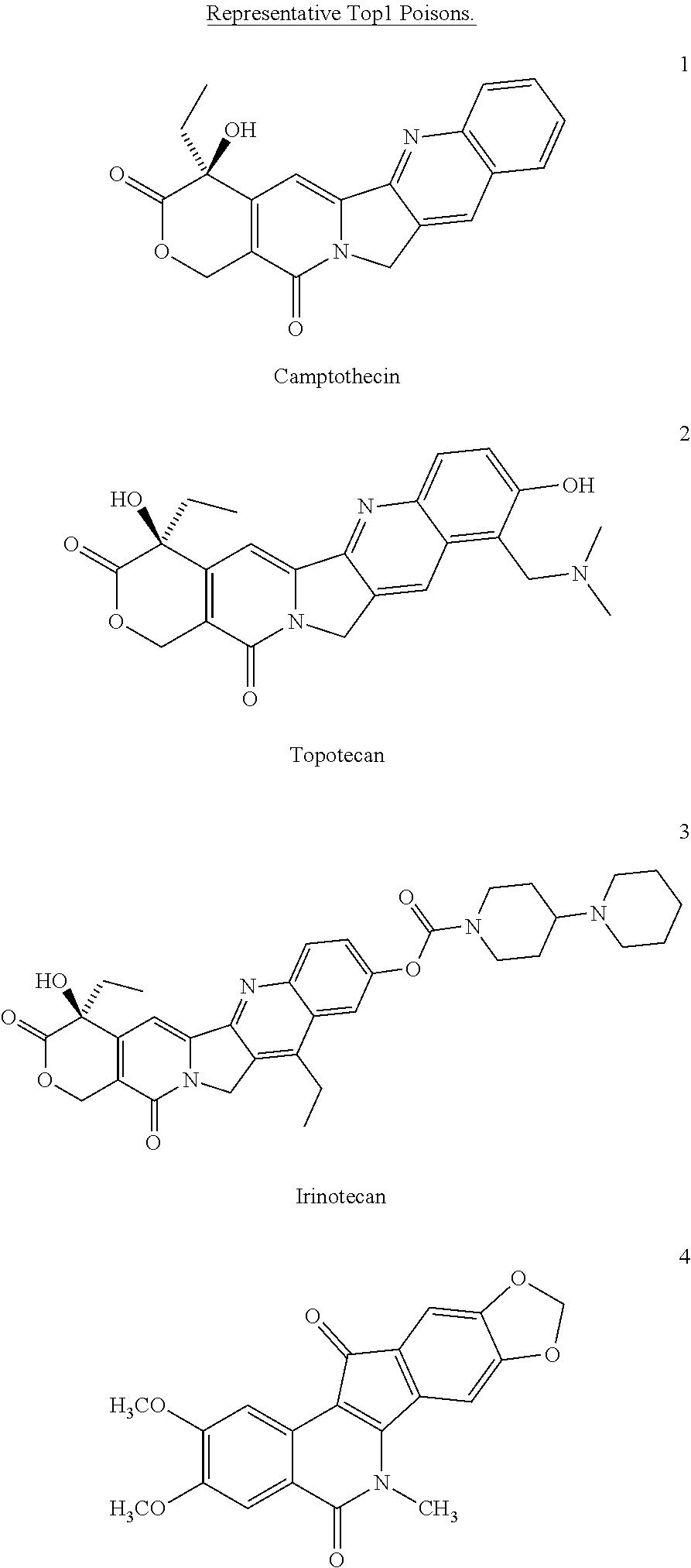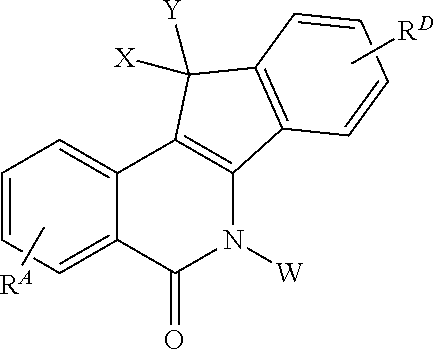Alcohol-, diol-, and carbohydrate-substituted indenoisoquinolines as topoisomerase I inhibitors
a technology of topoisomerase and indenoisoquinoline, which is applied in the field of substituted indenoisoquinoline compounds, pharmaceutical compositions and formulations, can solve the problems of double-stranded dna breakage and apoptosis, and achieve and potent top1 inhibitory activity
- Summary
- Abstract
- Description
- Claims
- Application Information
AI Technical Summary
Benefits of technology
Problems solved by technology
Method used
Image
Examples
examples
[0144]The following examples further illustrate specific embodiments of the invention; however, the following examples should not be interpreted in any way to limit the invention.
Example
[0145]Chemistry. Aldopentose and Aldohexose Substituents. In a previous publication, the installation of indenoisoquinoline side chains involving condensation of the indenoisochromenone lactone (a vinylogous anhydride, e.g. compound 16, Scheme 1) with a primary amine was reported. The preparation of carbohydrate-derived indenoisoquinolines followed a similar approach, by the conversion of the aldose into an aminodeoxyalditol. Without being bound by theory, it was speculated that protection of the hydroxyl groups of the monosaccharide may be necessary to carry out the required transformations. However, the published method of Winestock and Plaut for preparation of aminodeoxyalditols was employed without recourse to protecting groups. [Winestock, C. H., et al., J. Org. Chem. 1961, 26, 4456-4462] This m...
example
[0223]Modeling of Indenoisoquinolines. Indenoisoquinolines 12a and 12b were constructed in SYBYL. Hydrogens were added, and the ligands were minimized using either the MMFF94 force field with MMFF94 charges, or the Tripos force field with Gasteiger-Huckel charges. Each ligand (two per charge set, four total) was docked into the mutant crystal structure using GOLD 3.2 using default parameters and the coordinates defined by the crystal structure as described above. The top three poses for each ligand were examined, and both the normal (compounds 12a and 12b) and flipped (compound 12a only) ligands were merged into the crystal structure, and the entire complex was subsequently subjected to minimization using a standard Powell method, the MMFF94 force field and MMFF94s charges, a distance-dependant dielectric function, and a 0.05 kcal / mol*Å energy gradient convergence criterion. The ligand overlays in FIG. 2 were constructed by aligning the crystal structures of 1SC7 and 1SEU using the ...
PUM
 Login to View More
Login to View More Abstract
Description
Claims
Application Information
 Login to View More
Login to View More - R&D
- Intellectual Property
- Life Sciences
- Materials
- Tech Scout
- Unparalleled Data Quality
- Higher Quality Content
- 60% Fewer Hallucinations
Browse by: Latest US Patents, China's latest patents, Technical Efficacy Thesaurus, Application Domain, Technology Topic, Popular Technical Reports.
© 2025 PatSnap. All rights reserved.Legal|Privacy policy|Modern Slavery Act Transparency Statement|Sitemap|About US| Contact US: help@patsnap.com



